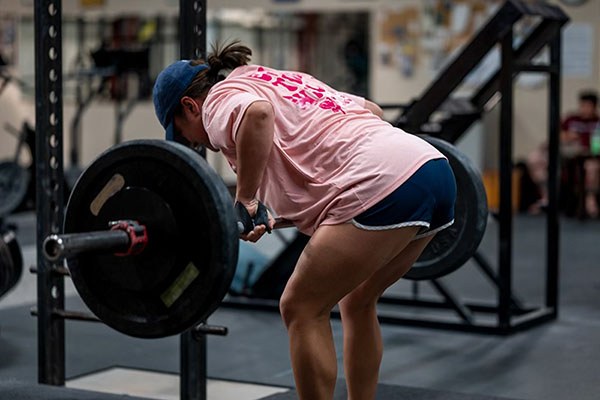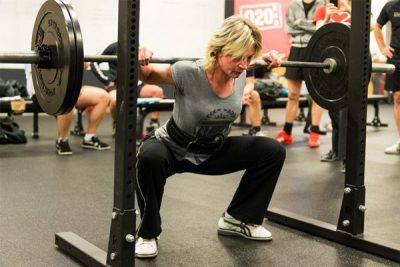
The Barbell Row: A Clarification
by Michael Jones, SSC | August 07, 2024
The perhaps-ill-begotten child of the stiff legged deadlift and the
power clean is the barbell row. It is a valuable tool for beat-up
guys who cannot power clean or snatch – you know who you are – or
those with programming that has carefully determined it to be
appropriate. If you cannot clean or snatch because you are
un-coachable or un-athletic, that probably means you should learn to
clean or snatch. It builds character.
Like the SLDL, the row
begins with the barbell over mid-foot and beneath the scapulae with
the knees more extended creating a more open knee angle and closed
hip angle than in the deadlift. This mechanical manipulation raises
the hips, which makes the back angle more horizontal. The initiation
of both the row and the SLDL begins first with the quadriceps
extending the knee, then the muscles involved in the posterior chain
– hamstrings and glutes – for hip extension, even if that timing
is subtle. If hip extension occurs first then the hips come forward,
the knees come forward, and the bar must go around the knees to
finish the rep. This is not a very efficient bar path. And whereas
the SLDL must finish locked out at the top with the bar on the
thighs, in the row the bar never touches the legs and the back angle
will never become completely vertical.
Like the power clean,
the row begins with the barbell over mid-foot, and accelerates the
barbell using a knee extension with straight arms and rigid back.
Then once the bar passes the knees, the hips and glutes facilitate
hip extension, and the momentum imparted to the barbell aids to the
finish of the lift. Unlike the power clean, in the final part of the
movement the elbow flexes intentionally (rather than an artifact of
having to rack the bar) involving elbow flexor contraction, the
shoulder extends, engaging the lats and triceps, and scapulae retract
using the traps and rhomboids. This results in what looks like a
violent slamming up of the bar into the belly. When it is very heavy
there is a tendency to use the weight of the bar to pull the chest
and abdomen back down to meet the bar, finishing the rep from the top
down.
Like both the SLDL and
the power clean, the row also demands that the erectors keep the back
in rigid extension off of the floor and throughout the rest of the
exercise with a hard isometric contraction. This way you get the
benefit of strength and stability by identifying and maintaining your
back in the right position, as well as the rowing motion. In all
three pulling movements, the hamstrings and glutes first act in
isometric contraction anchoring the lower back muscles into
contraction through the pelvis; but this is not all they do. As Rip
observes in the blue book, “in complex human movement, muscles
change actions during the course of the activity, starting off with
one function and ending with another, and the function of the hip
extensors during the barbell row is a good example of this shift”
(SSBBT: 227).
The movement begins
with straight arms, knee extension, and isometric contraction of the
back, aided by the hip extensors to maintain the positioning. Then
the “hand-off” from quads to hip extensors changes the primary
role of the glutes and hamstrings from isometric contraction to
concentric contraction in order to extend the hips. During this
hand-off the elbows receive the momentum of the upward-moving barbell
and finish it using the shoulders and scapulae with concentric
contractions of the upper back and arms.
When it comes to
programming the row, there are specific times and places for it.
Whether it is on a novice’s way to a first chin-up or as a light
pull in an advanced lifter’s deadlift specialization, it could be a
valuable tool when done correctly. But maybe the most salient piece
of advice I ever received about the row was from Rip: “Get your
deadlift to 500; then you can develop an opinion about the row.”






